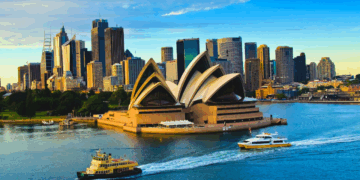- Knoll’s study on ‘Immersive Planning’ found that today’s workplace is dramatically different from those of just a generation ago
- The study found five significant factors that drive a new way of thinking about the work environment
- Immersive planning requires a workplace to be improvisational, dimensional, and communal
Knoll’s study “Immersive Planning From Research to Realization: An Experience-based Workplace” presents a new approach towards workplace design. The study surveyed 110 workplace executives worldwide between 2015 and 2016 and interviewed experts in real estate, architecture, design, academics, and workplace strategy. In 2016, Knoll performed a separate study of over 1,400 knowledge workers across 14 countries to determine the relationship between the design of the environment with creativity, productivity, happiness, stress, and satisfaction.
Knoll’s research was based on the fact that today’s “empowered workers move frequently throughout the day to their choice of workspace, using the tools they select and meeting with the team they need, at the time and place they prefer.”
This has led the workplace to take on a new life, a new style. The workplace is no longer just a place to get work done; rather they are now “functioning as a town square-like hub energized by the hum of the occupants.” Elements of residential and hospitality design have weaved their way into the workplace in order to bring workers together and facilitate connections, collaboration, idea generation, focus, and even relaxation.
Knoll proposes that these “changing dynamics call for a new ‘immersive’ workplace planning approach that is as fluid as the teams themselves. As workspaces become defined by an individual’s actions rather than job function, the lines between space types diminish; enhancing interaction, inviting connected experiences and radiating a sense of hospitality at every exchange.”
The flexible workspace industry is one step ahead of most companies when it comes to immersive planning. In fact, some of the key elements of immersive planning are borrowed from the coworking concept. Knoll identified five factors that led to this change in dynamics in the way people interact with the workplace:
- Group-based work is now the norm
- Hospitality and residential influences have entered the work environment
- The office (or workplace) is still the home base for most workers
- Empowered by choice, workers make the workplace their own
- Management of the real estate asset is tighter than ever
These five factors have also impacted the flexible workspace industry. Most professionals and even companies go to these spaces to find opportunities for collaboration and to reduce overhead costs; let’s also not forget that flexible workspaces dictate today what workplaces should look and feel like, as they have proven that they empower workers and increase productivity levels.
Is your flexible workspace “immersive”?
Knoll concluded that immersive workplaces are comprised of three fundamental elements: improvisational, communal, and dimensional. “The model cultivates an environment of dynamic flow, constant movement, meaningful interaction, creative group effort and innovation within a gracious and welcoming setting.”
Knoll’s immersive planning challenges the idea of activity-based work; instead of proposing environments for specific kinds of work like the activity-based model, immersive planning empowers users to define what type of space they want to use for their particular needs. According to Knoll, this allows for “an environment that creates a variety of experiences, transforming at a moment’s notice and evolving with use.”
By creating an immersive workplace, you are “introducing a more casual atmosphere, providing abundant choices for places to work, and integrating social spaces and a wealth of amenities.” This can help flexible workspace operators, as well as companies, support engagement, collaboration, and creativity.
An immersive workplace should “address a world in which every workday can be different and every interaction holds potential.” It focuses on “the ad hoc flow of people and projects, occurrences and interactions.”
Improvisational
An immersive workplace is improvisational when “group work and mobility are norms and informality reigns.” Improvisational immersive planning “embodies the fluid nature of how work, people and information move throughout the workday.” This means that boundaries and transitions are ever-changing and agile. The key factor to take into account here is that “improvisational environments respond to rather than prescribe individual movement.”
Communal
An immersive workplace is communal when it “expresses the sense of inclusion, culture, and connections within an organization.” This means that the workplace is centered on the human element and fosters co-creation, collaboration, and connections that drive innovation and inventiveness in problem-solving.
Dimensional
An immersive workplace is dimensional when it is “inspired by innovations in hospitality, public space and entertainment design.” The dimensional element is what gives the workplace “a multisensory experience that engages multiple touch points,” that enhance interaction along the way.
A dimensional workplace is created to be both visually and tactilely diverse, by using multiple textures and materials.
Additional findings
- More amenities = more satisfied workers. The top amenities are training programs, on-site cafes, nursing or lactation areas, and on-site tech and meeting support
- Highly satisfied workers have access to more networking and idea-sharing opportunities
- Being able to personalize one’s space of work is a priority for most workers
Immersive design struggles with providing enough privacy and noise control. However this can be easily countered by the right etiquette and allowing individuals to wear headphones


 Dr. Gleb Tsipursky – The Office Whisperer
Dr. Gleb Tsipursky – The Office Whisperer Nirit Cohen – WorkFutures
Nirit Cohen – WorkFutures Angela Howard – Culture Expert
Angela Howard – Culture Expert Drew Jones – Design & Innovation
Drew Jones – Design & Innovation Jonathan Price – CRE & Flex Expert
Jonathan Price – CRE & Flex Expert












